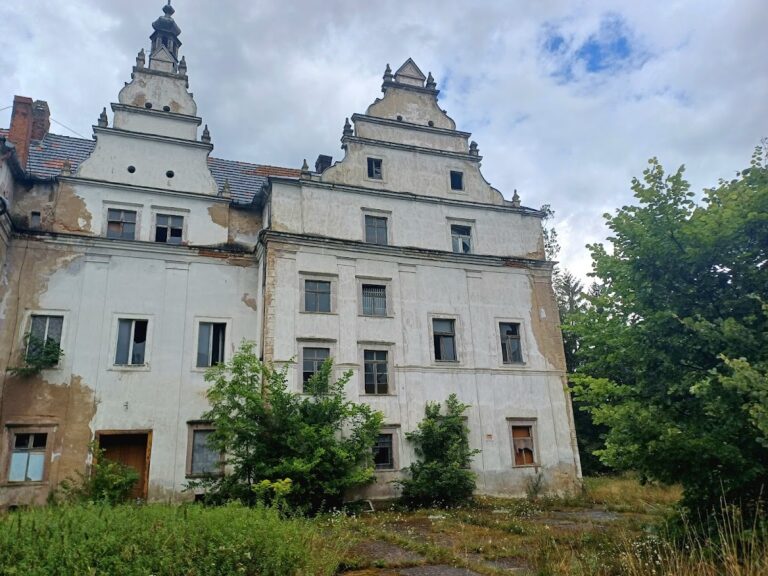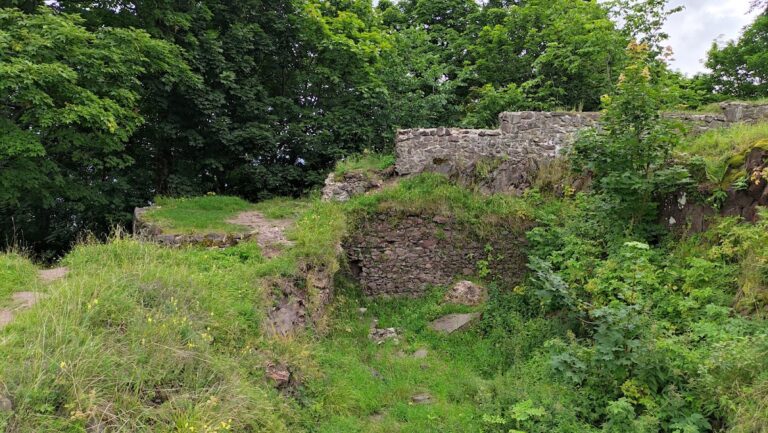Niemcza Castle: A Historic Medieval Fortress in Poland
Visitor Information
Google Rating: 3.6
Popularity: Low
Google Maps: View on Google Maps
Country: Poland
Civilization: Medieval European
Remains: Military
History
Niemcza Castle is located in the town of Niemcza, Poland, and was constructed by medieval European builders on a site with a long history of earlier occupation. The earliest known settlers in the area were the Vandals during the 4th century, followed by the Slavic Silinger tribe, who lived here before the castle’s initial fortifications appeared.
The first fortress on this site dates back to the 10th century and was originally a wooden structure. Around the year 1295, this fortification was rebuilt in stone, marking a significant stage in its development. This transformation allowed Niemcza Castle to become an important defensive stronghold, forming part of a wider system of fortifications throughout the region.
Control over the castle changed during the early medieval period. Notably, Polish forces captured Niemcza from Bohemian rulers in 990. The site’s historical name “Nemzi,” recorded by the medieval chronicler Monachus Sazavensis, represents the oldest documented place name in the Silesian region. In the early 11th century, the castle endured sieges by significant historical figures: Emperor Henry II unsuccessfully besieged it in 1017, and Duke Břetislav II attempted conquest in 1093, although he too did not succeed.
From the mid-12th century onward, Niemcza Castle served as the seat of a castellan, a local governor responsible for the surrounding territory and the castle’s administration. A chapel was added in 1288, reflecting its growing role not only as a military center but also as a place of religious importance. The castle later came under the suzerainty of Bohemian rulers in 1329. During the Hussite Wars of the early 15th century (1419–1436), Niemcza suffered destruction but was rebuilt in the late 1400s under Duke Frederick I of Brzeg-Legnica, reaffirming its strategic value in the region.
The Renaissance period brought notable changes when Duke George II of Brzeg initiated a significant reconstruction around 1585. Architects Bernhard Niuron and H. Lugano oversaw the expansion, which included decorative wall art using the sgraffito technique—where layers of plaster are scratched to reveal contrasting colors underneath—and the addition of a covered gallery inspired by Prague Castle. During this time, the castle gained the alternative name “Hedwigsburg” and became a ducal residence, reflecting its status beyond a military outpost.
Despite the devastation wrought on the surrounding town during the Thirty Years’ War, the castle itself survived the conflict relatively intact, though it faced partial destruction by fire in 1735. Around 1830, it underwent rebuilding efforts that simplified its appearance and removed much of the Renaissance decoration. One notable Renaissance feature, an octagonal structure adorned with sgraffito, survived until 1964 before being demolished due to deterioration.
In the 19th and 20th centuries, Niemcza Castle’s function shifted from a noble residence to civilian uses. It housed administrative offices, a courthouse, a clothing factory, and later a museum. Conservation efforts in 1992 sought to restore some of the castle’s remaining decorative features, particularly the sgraffito on the northern wing’s exterior.
Within the castle complex, there was also a Baroque chapel dedicated to St. Hedwig, built between 1711 and 1712. Connected to the castle by a gate wing, the chapel had to be demolished in 1964 because of structural instability, leaving only its footprint visible today.
Remains
The surviving structure of Niemcza Castle is composed primarily of a two-story building arranged in two wings. This layout results from multiple phases of reconstruction across centuries, reflecting the castle’s evolving functions and styles. The main entrance faces the courtyard and is marked by a triangular pediment, a classical architectural element added during later renovations.
Originally, the castle was protected by substantial stone walls and fortified by two city gates dating back to the late 13th century. Portions of these fortifications remain today as fragmentary evidence of the medieval defensive system. These walls once formed part of the stronghold’s circuit, helping to shield the occupants from attack.
The Renaissance reconstruction introduced distinctive artistic features, including extensive sgraffito wall decoration. This technique involved scratching through layers of plaster to produce decorative patterns and images. A significant architectural element was the covered gallery known as a krużganek, modeled on a feature constructed in Prague Castle in 1545. Unfortunately, much of this ornamentation was lost following the damaging fire of 1735 and subsequent rebuilding efforts.
One particularly notable Renaissance addition was an octagonal structure embellished with intricate sgraffito work. This feature survived intact until the mid-20th century but was removed in 1964 due to its poor condition.
The castle occupies a commanding position on a steep hill, which is naturally defended on its eastern side by the Ślęza River. This geographic setting enhanced its defensive capabilities throughout its history by providing a natural barrier.
The Baroque chapel of St. Hedwig once stood within the castle grounds and was physically connected to the main building by an adjoining gate wing. Though the chapel was dismantled in the 1960s because of safety concerns, the outline of its ground floor remains visible, preserving a tangible link to this religious element of the complex.
Overall, the architectural and archaeological remains of Niemcza Castle reflect a layered history, showcasing medieval fortifications, Renaissance artistic enhancements, and later adaptations for administrative and cultural functions.







